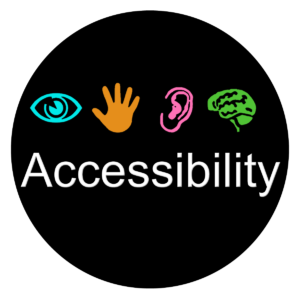How Can Access Improve Your Museum?
public standing
It sounds cold and calculated but if your museum is more accessible then the public view of it is raised. After Hurricane Harvey hit Texas I had the chance to speak to a museologist down there. His museum and museum community were badly damaged in the flooding.
As with Canadian Museums his relied on funding through ticket sales. He was at a loss. How could he actively support his community while also trying to raise money to support his museum? The solution couldn’t be reduced ticket prices across the board.
After speaking for a while we brainstormed having a system in place such as reducing fees for student card holders; offering low-cost/no-cost museum learning sessions to poor schools and neighborhoods; and having ‘free days’.
This plan raises access for his museum. Specifically for the poor, it also helps raise his museums standing by increasing visitor numbers. If even one of these programs is successful his museum has a greater chance at obtaining public funding.
Expanding Your Community
My Texan friend’s access programs will also help him reach an audience that is often not present in museums: black and ethnic minorities. As many people know Texas has a large population of Latinx people. For various reasons that would take too much time to discuss with any nuance, marginalized people tend not to go to museums. My colleague helps to break down barriers between his museum and his community with simple steps.
This is the same with other types of access: many with intellectual disabilities find any type of academic setting difficult. It is not always as easy as reduced fees. And to be perfectly honest with you, those reduced fees might not help your community. They are the first steps my Texan friend took.
Elevating Marginalized Voices
My Texan friend and I are both white. This is an unavoidable fact of our nature. We will never not be white just as I will never not be autistic.
We both have access to spaces that other people struggle with. I had a very large class for my MA. There were lots of white people (European and American), lots of Asian people, lots of accents. One black American. This was an extreme but it is reflective of the museologist community. Because marginalized people feel less welcome in museums, fewer minorities become museologists.
This is a long winded way of saying that improving access requires elevating marginalized voices. This does not mean that I, a white Canadian, should develop on my own an exhibition of Huron artifacts. It means that I must seek out Wyandot people willing to work with me to understand the artifacts and create a truthful narrative for their artifacts.
By promoting Wyandot voices for this theoretical exhibition I have improved the quality of the exhibition. This is because my biases as a white, female, Christian-raised Canadian would unavoidably effect my ability to research those Huron artifacts. I simply would not know everywhere there is to look for information!
The same is true for any marginalized group. As Museums are not neutral, by not actively elevating marginalized voices we are actively suppressing them. By not helping his community my Texan Friend ran the risk of hurting them.
Helping Your Community Helps You

My whole life I have gone to museums. I spent 16 hours in the London Zoo. I eat, sleep, and breath museums. They are everything to me.
I am also a late diagnoses autistic woman. Without knowing it I was avoiding sensory overload for year by avoiding galleries and museums that I cannot handle. Sadly this means I likely won’t be going back to Ripley’s Aquarium any time soon but those museums that automatically take sensory needs into account such as the Roman Baths in Bath or the Egypt Centre in Swansea? I will certainly return there. I actually went to the Baths twice before my diagnosis.
My friend is hard of hearing – not that he believes his doctor – and he struggles to hear anything if the noise environment is too stimulating. He finds restaurants, movies, and Christmas parties too hard to hear in. He absolutely loved visiting the Eden Project because the garden helped dampen the sounds of other guests.
My HoH friend would never think to look for accessibility information online as he doesn’t think he needs it. He still reads captions for shows and needs a ‘clean’ sound environment. How many museologists are like me or my friend?
Accessible ramps are not there for parents with strollers and they shouldn’t be. After all I have seen families carry strollers up stairs. While ramps are helpful to individuals with strollers, they are necessary for disabled people.
That said, one way to get funding is to point out how your project helps able-bodied, neuro-typical individuals as well.
Resources
Museologist Notes – Social Prescribing An introduction to Social Prescribing (creating access in museums to help fight isolation).
“Social Prescribing: A Review of Community Refferral Schemes.” Jinda J. Thomson, Paul M. Camic, Helen J. Chatterjee. London: University College London. 2015. This is a very long study on social prescribing in the UK.
“Accessibility Techniques for Museum Web Sites.” Susan Anable, Adam Alonzo. Museums and the Web, 2001. This PDF can help you develop web resources – or point you in the right direction.
“Developing Accessible Museum Curriculum: The Research, Development and Validation of a Handbook for Museum Processionals and Educators.” Ann Elliott. An Abstract of a Dissertation. Kansas State University, 2007. This is an excellent resource for education programming.
